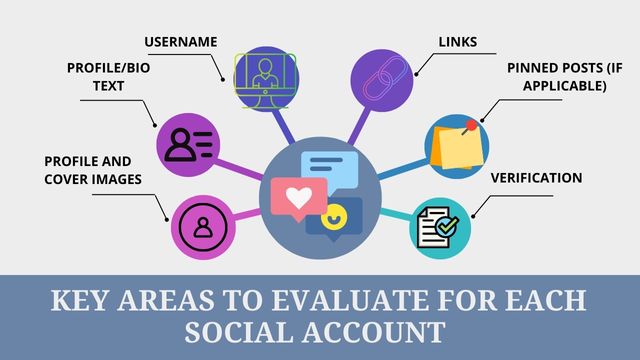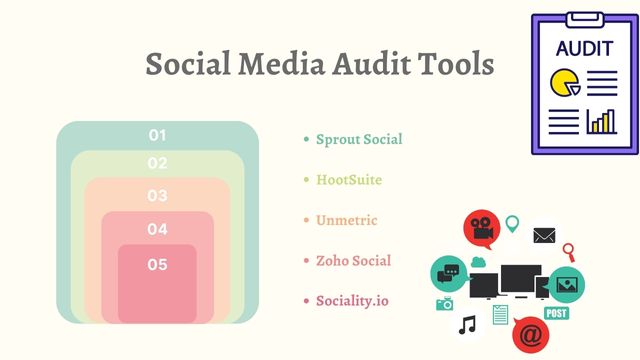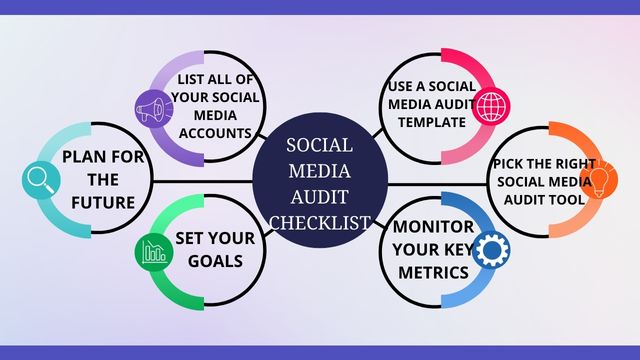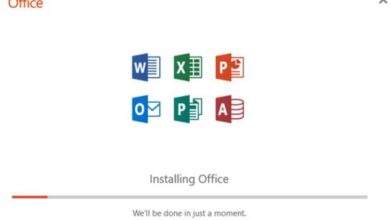How To Do A Social Media Audit For A Client

- What Is A Social Media audit?
- Why Conduct A Social Media Audit?
- How To Do A Social Media Audit For A Client?
- Social Media Audit Tools
Any social media plan should begin with Conducting a social media audit. Main Query is how to do a social media audit for a client? Use this free form to evaluate your existing social media initiatives.
An audit is a great approach to get a better knowledge of your business’s operations. Aside from that, it’s also a good idea to keep your client’s social media presence up to date and improve it so that it properly aligns with the entire marketing strategy.
You should always expect some new platforms, audiences, and features to develop in the world of social media. This implies that there are constantly fresh ways to put this channel to work for your company.
It’s critical for you to remain on top of the best methods to use social media as a marketing and advertising tool as a business owner.
Isn’t social media marketing all fun and games until it’s time to track your progress? Fear not: a social media audit is your company’s best friend.
A social media audit isn’t as frightening as it may appear. Auditing your social media presence allows you to see what’s going on across all of your channels and how each one contributes to your marketing objectives. And, with a simple template, it’s not a time-consuming or difficult task.
From start to end, this post explains how to conduct a strategic social media audit.
What Is A Social Media audit?
A social media audit is a list of your present social media accounts that tracks how well you’re accomplishing your marketing objectives.
It identifies your strengths and shortcomings, as well as the next steps you should take to improve your outcomes in the future.
A social media audit will provide you with a thorough strategy for all of your social media channels, as well as the data you need to improve your social media marketing. You’ll notice:
- The most effective platforms for you
- On each network, find out what your audience wants to watch.
- Who is your target audience? (demographics and more),
- What’s working (and what’s not) to expand your audience?
- What role each platform plays in achieving your objectives, which fresh ideas will help you expand, and where you should focus your attention next.
Why Conduct A Social Media Audit?
An audit provides answers to various inquiries about a company’s interaction with its online audience.
- Is it true that having a Twitter account attracts new customers?
- Is it true that the Facebook page saves past posts?
- An audit can readjust any online profiles that aren’t in accordance with a company’s marketing plan, or it can signal that they need to be discarded.
An audit can also help you figure out which marketing strategies are working and which ones need to be tweaked.
The findings can be utilized to help businesses plan future campaigns and conduct subsequent audits.
How To Do A Social Media Audit For A Client?
It’s not the same as conducting a Social Media audit for a client and then giving them a summary of the results.
While completing an audit demands meticulous attention to detail and a vast amount of data, it is not necessary to show all of it.
When conducting that deep dive into your client’s social media, you’ll now have a social media audit checklist to consider.
Finally, locate a smaller tutorial at the end of this segment if you want to learn how to deliver this audit to your clients effectively.

Create a list of all your social media accounts
You may believe you know all of your social media accounts off the top of your head, but you’re probably forgetting one or two.
Begin by making a list of all of your social media profiles, including any that are dormant.
If you want to find all of these accounts, don’t rely on company documents.
What if a different department decides to open a new account without informing anyone? The only way to find out is to dig around.
Where to find this info:
- Search each social network
Search each major social network for your brand and product names to check if any unexpected accounts, such as old test accounts, are discovered.
Then devise a strategy for dealing with any problematic accounts you’ve discovered. Getting rid of old test ones your organization made shouldn’t be too difficult, however finding previous login information may be a hassle.
It’s likely that the legal department, rather than you, will be dealing with imposter accounts or others infringing on your copyrighted stuff.
Still, make a list of the steps you’ll need to complete each one. It may be as simple as contacting the false account’s proprietors or reporting the account to the social media platform where it is located.
Set up a social media monitoring programme to keep an eye out for additional impostors who may appear in the future if you’re satisfied you’ve tracked down all relevant accounts.
Consider the accounts you don’t have in addition to the ones you have. Are there any social media channels where you aren’t active? Is it time for you to start making TikTok dances? What do you think of Next door? Is it Byte or Bit?
You don’t have to be on every network, but an audit is an excellent moment to incorporate new ideas into your long-term social strategy. If you’re not sure, at the very least reserve your company’s username on new platforms so that no one else gets it first.
Evaluate each account for brand integrity
Examine each profile to check that it adheres to your current brand style requirements. Your profile and banner images, hashtags, content and phrases, brand voice, URLs, and more are all part of this.
The following are the essential aspects to consider for each social media account:

- Profile and cover images
Make sure your photographs represent your current branding and meet the image size criteria of each social media platform.
- Profile/bio text
When writing a social media bio, you only have a limited amount of space to work with, so make the most of it. Are all fields correctly filled in? Is your “about” section copy consistent with your tone and voice guidelines?
- Username
Do you have the same username on all of your social media accounts? If you can, it’s a good idea to do so. Of course, if the accounts serve diverse objectives, you can have multiple accounts per network.
- Links
Is your profile’s URL pointing to the correct website or landing page?
- Pinned posts (if applicable)
Examine your pinned posts to make sure they’re still relevant and current.
- Verification
Is your account protected by a blue check mark? Should you give it a shot if you haven’t already? If you’re interested in getting verified on Instagram, Twitter, or Facebook, we have guidelines on how to do it.
Identify your top-performing social media content
Make a list of your top five posts on each social media profile. Copy the links to the posts into your social media audit template so you may evaluate them later.
What is a “high-performing post?” To determine the material that your audience responds to the most, we recommend ordering them by engagement rate. However, you might prefer to concentrate on an other critical indicator, such as link hits or conversions.
Look for patterns in your most popular posts. Keep your mind on your meter (and your metric on your mind), to quote Snoop Dogg, and ask yourself:
- What are you doing to achieve the answer you want? What about photo posts? Videos? Feed, Myths, or Newsreels?
- Which of the following has the highest level of engagement: Are you looking for raw, behind-the-scenes content or polished, professional posts?
- Is it true that people respond the same way across all platforms, or is there a type of material that performs better on one platform than another?
- When you raise a question in your post, do people respond?
- Are your most popular postings consistent with your brand’s current tone? (If not, and they’re doing well, it might be time to reconsider that voice.)
Where to find this info:
You can use the built-in analytics tools for each social network to sort and find your top posts for the key metric you’ve chosen.
Evaluate each channel’s performance
Now it’s time to look at each of your social media profiles from a 10,000-foot perspective. This step assesses the contribution of each social media platform to your overall marketing objectives.
Now is the time to write a mission statement and a few key goals for each social account if you haven’t already.
Similar aims, such as increasing online traffic and conversions, may be shared by several accounts. Others may exist solely to improve customer service or raise company recognition.
- Make a list of each channel’s goals and keep track of your progress toward them.
- Write down the real data for measurable targets like traffic or conversions.
- How many people come to your website because of Instagram?
- How many sales were made as a result of Facebook Page visitors?
- If customer service is the goal, keep track of your CSAT score and evaluate if it improves over time.
- Be as precise as possible.
- Record supporting evidence for goals that do not have quantitative data.
- Is your Facebook fan base growing if you’re using it to promote your business?
- Have you boosted your organic or paid reach recently?
The objective is to figure out what each of your social media outlets is for and how effective they are.
Where to find this info:
The goals you specify for each channel will determine where you can get relevant information. Using social listening tools for customer service or brand awareness goals provides data from real customers.
The majority of this data is available in Google Analytics for traffic and conversion goals.
Go to Acquisition -> Social -> Network Referrals to see the traffic breakdown by channel.
Conversion tracking via social media isn’t a precise science, however some channels make it easier than others.
To track Facebook conversion statistics, for example, you’ll need to set up Meta Pixel (previously Facebook Pixel), and many networks have their own tracking codes. Many e-commerce platforms include social media channel tracking as well.
Track your social media audit results over time
It’s great that you’re conducting this audit, but do you know what will make it even more effective? Regularly doing social media audits and comparing the results over time.
Consistency isn’t flashy, but it gets the job done.
Determine how often you’ll conduct an audit: monthly? quarterly? Stick to it, and compare your social media analytics and insights to the preceding time period each time you conduct one.
This allows you to eliminate what isn’t working, double in on what is, and rapidly discover uncommon variants or difficulties.
Where to find this info:
Keep things simple by keeping all of your social media audit documentation in one location so you can readily review past data.
Make it even easier by employing a platform that measures effectiveness across social media networks from a single dashboard.
Understand your audience on each platform
Now that you know how each account contributes to your brand’s support and growth, it’s time to figure out who you’re reaching on each platform.
The demographics of your target audience are a fantastic place to start.
Instagram, for example, is well-known for its shopping capabilities, but TikTok is where users spend the most money.
For adults aged 35 to 44, Facebook is the most popular site, but for those aged 18 to 25, YouTube is the place to be.
While your target audience may be unique,
Create buyer personas based on the demographics of your unique audience on each platform, as well as the types of content they prefer.
Take action: Update your social media marketing strategy
Consider how you can improve now that you know your objectives and current performance for each platform. As you plan the next month or quarter, go over your notes from earlier steps.
Here are some questions to consider:
- Which platforms are the most effective in terms of generating results?
- Is there anything new you should be using on social media?
- Are there any platforms that you’re missing out on? Do you really need them, or would it be a better use of your time to get rid of them and focus on the ones that perform better?
- What types of content are the most effective right now? What’s the best way to make more of this?
Build on what you learnt from your top content in phase three by brainstorming new content and campaign ideas. If video is a major hit, make a plan to include more of it into your marketing.
These choices do not have to be permanent. Running testing and experiments to see what works for your target demographic is essential to successful marketing.
Take risks and don’t be afraid to fail. Regular social media audits will tell you whether you’re on the correct track or need to change course.
Write down each new approach and idea in your marketing plan.
Where to find this info:
Your mind! Use all of the information you’ve gathered so far to come up with new ideas. Have your platform goals in front of you so you can relate them to your revised marketing plan.
Remember to notify others when you make changes to the marketing strategy so that everyone is on the same path.
Centralize account ownership
Last but not least, assign a “owner” to each social media platform in your social media audit.
This could be an individual or a group within your firm. In between social media audits, their role is to make sure the account stays on brand and up to date.
They’ll also be in charge of adding new contributors to the account and managing any passwords or app connections that could be required.
Schedule your next audit (and the next one, and the…)
Schedule your social media audits ahead of time to ensure that they are completed. Maintain a consistent schedule.
For most businesses, quarterly is sufficient, though if you have a lot of campaigns or channels, you may want to check in weekly.
Regular audits ensure that your team’s day-to-day marketing efforts are aligned with your company’s objectives. You’ll discover how to engage with your audience and refine your social approach over time.
Social Media Audit Tools
Using the correct tools to complete your audit can speed up and simplify the process. Not only can social media management solutions gather the data needed for an audit, but they can also track it over time so it’s always visible at a glance.
Many will provide you with rich insights that go beyond the built-in capabilities of each platform. Check out Social Media Audit Tools below to discover what can be useful for your company:

- Sprout Social
This is an all-in-one social media management software that gives you a detailed perspective of how people engage with your profiles on social media.
- HootSuite
This application generates customized reports for your company that show how social media affects your brand.
- Unmetric
This platform focuses on assisting you in comparing, benchmarking, and analyzing the social performance of your company.
- Zoho Social
This tool’s monitoring feature provides you with various “listening” columns that update in real-time when interaction with your social media profiles occurs.
- Sociality.io
This tool will also provide you with rival social media data so you can get a complete picture of how your audience interacts with your industry online.
Social Media Audit Checklist
It’s critical to stay on track as you begin your social media audit. A short checklist will assist you in focusing on the tasks at hand. As you begin your social media audit, keep the following point in mind.

- List all of your social media accounts
Combine all of your social media accounts into an one spreadsheet.
- Use a social media audit template
Have a plan in place so you know where to begin.
- Pick the right social media audit tool
Make use of tools that will help you save time and money during the procedure.
- Monitor your key metrics
For each platform that your company uses, collect data on audience, engagement, and post information.
- Set your goals
Define what aspects of your social media presence you want to improve.
- Plan for the future
Apply what you’ve learnt to your social media marketing approach.
Conclusion
Managing many social media accounts can be time-consuming. A social media audit can help you figure out how to best use your time and resources on social media. A quarterly review of your online presence can assist your company in making the most of social media and everything it has to offer.
Frequently Asked Questions (FAQs)
What is the average time it takes to do a social media audit?
A social media audit doesn’t have to be time-consuming or difficult. You may finish yours in as little as 30 minutes if you follow the steps given in this article. Every social media platform provides you with the data and insights you need to optimize your social media marketing plan and communicate with your target audience in their own language.
What is the price of a social media audit?
The cost is determined by the size of your accounts and the number of platforms you want to audit. However, social media audits can cost anything from $300 to $5,000.
What are the fundamentals of social auditing?
- Comprehensive: Aims to report on all aspects of the organization’s activity and performance at some point in the future.
- Participatory: Encourages stakeholders to participate and share their values.
- Multidirectional: Stakeholders share information and provide feedback on a variety of topics.
What is a media audit?
A media audit is an objective, expert third-party review of the performance of your media buys based on facts. The difficulties and gaps associated with self-reporting by sellers and agencies are eliminated with MMi media audits. We employ real-time data from your purchases, as well as our own ground-breaking technology and industry-standard third-party research.
What is social media evaluation?
Examining your online presence and analyzing your entire strategy is part of a social media audit.






